Stock tank pools are easy to install, affordable, and can be customized to fit any backyard. No wonder there is an ongoing trend online for stock tank pools as a great alternative to traditional in-ground pools!
Stock tank pools can also be used to elevate your compact barndominium if you prefer a more elevated minimalist look.
That being said, if you consider the stock tank pool cost, you might wonder if it would ultimately be worth it.
To determine the stock tank pool cost, we must take into consideration the entire process, including ordering, installing, decorating, and maintaining the stock tank pool.
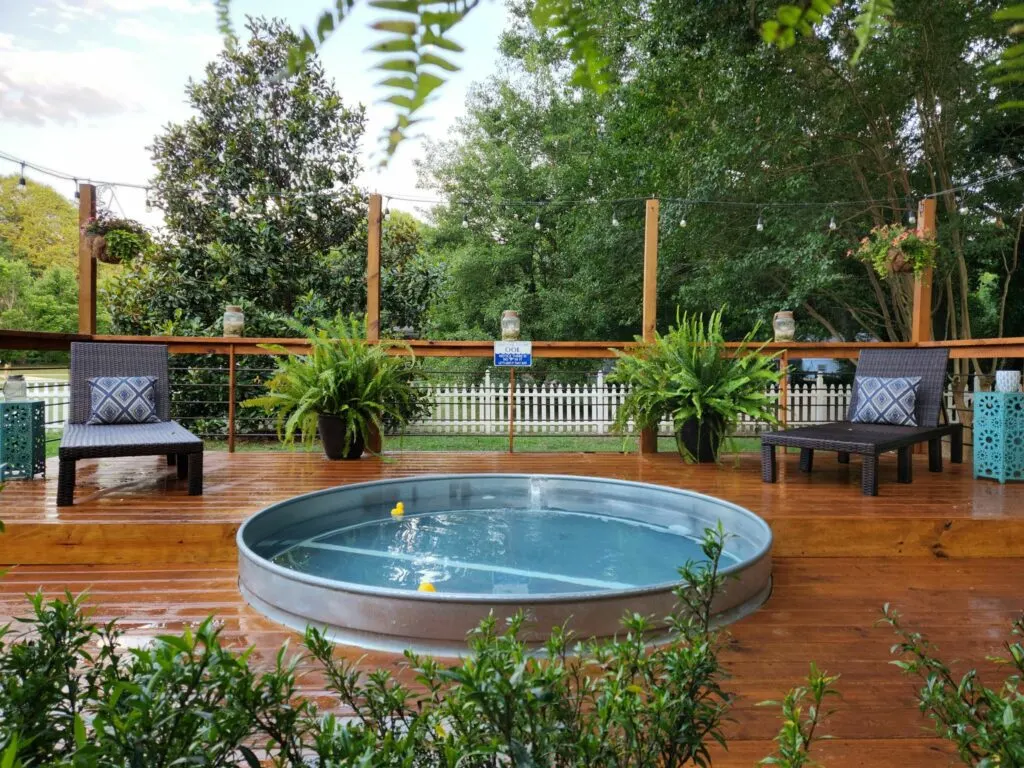
Page Contents
Stock Tank Pool Cost Factors
To determine the total stock tank pool cost, as well as whether this investment is right for your home, you should consider these important factors:
Ordering a Stock Tank Pool
A stock tank is an open-topped container that is traditionally used to store water for livestock. Nonetheless, it has become increasingly popular as a trendy pool alternative.
Made from either galvanized metal or plastic, metal stock tank pools are easier to clean and insulate.
On the other hand, plastic stock tanks have sloping sides with angled steps for stiffening. This makes insulation more difficult and not as durable for this purpose.
Most stock tank pools are just a few feet deep and up to eight feet wide, with prices online ranging from a little over $100 for a solo tub to over $700 for larger variations.
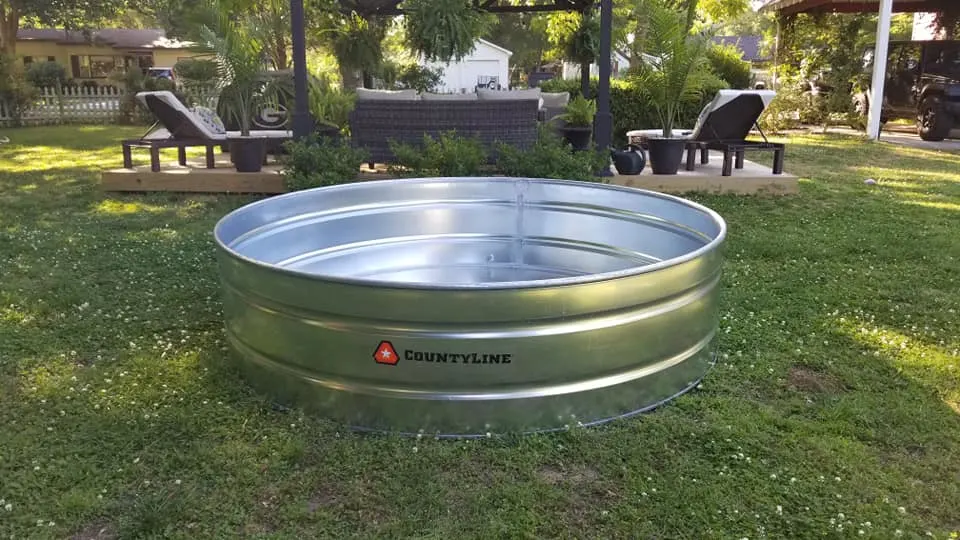
Materials
The materials needed to make your stock tank function properly as a pool should be considered when considering the total stock tank pool cost.
This includes the filter and pump, which typically cost less than $100, compared to an average of $1,000 for an in-ground pool, and the liner for a stock tank pool to prevent corrosion, which can range from $200 up to $1,000.
By upgrading your stock tank pool to be capable of being converted into a hot tub, you will still be able to use it during the colder months. Although this can be professionally installed, most people will do it themselves. Check out how to make a DIY stock tank pool.
Electric or propane heaters can be purchased for as little as $50 to as much as $330. If you can, you can save up to $200 by avoiding the need for a contractor.
You may also need hardware tools for installation, such as a drill, silicone connectors, and a saw-cutting tool. You may have these at home or can purchase them from the local hardware store.
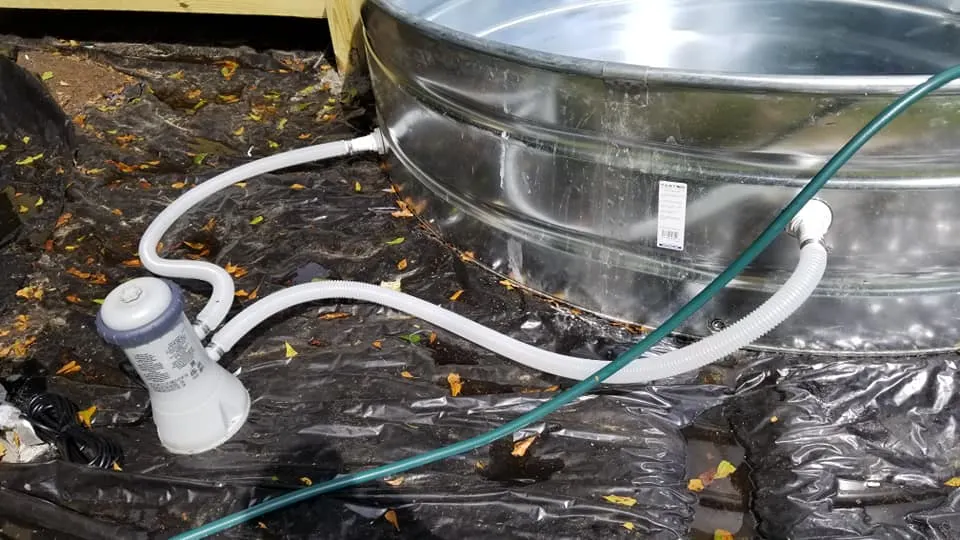
Delivery and Installation
Included in the stock tank pool cost are the delivery and installation. Keep in mind that prices may vary based on where you order and the size of the order to be delivered, but it is important to consider that a delivery fee will most likely apply.
Upon receiving your stock tank, you can install it with professional assistance. The cost of a professional installation can vary from $300 to $1,500, depending on the services requested and the size of your pool as well.
It is possible, however, to install smaller stock tanks on your own. There’s not a lot of work involved with installing stock tank pools, so you have the option to do everything yourself, and it’s cheaper, too.
Applying Décor
Stock tank pools are great for backyard decor because they’re so versatile. Make it stand out with bright colors and patterns, or apply a contemporary aesthetic that will fit your home’s appearance.
You can also make the most of your space by installing your stock tank pool in a shelter or shade in your yard, adding greenery, or making your pool an extension of your deck or patio.
Depending on how much you wish to invest in this project, you can renovate your space for as little as a few hundred dollars or as much as a few thousand.
The design choice is ultimately up to you, and the possibilities are endless—with your budget to consider.
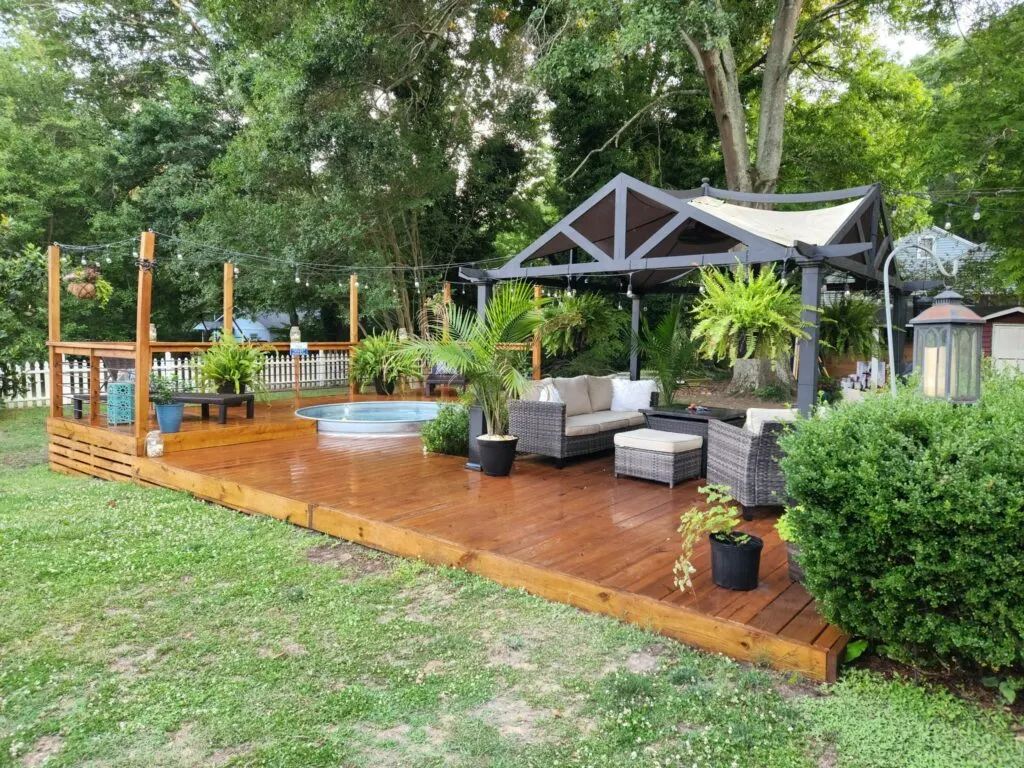
Maintenance
Stock tank pools are relatively easy to maintain. It is estimated that they cost a fraction of the cost of in-ground pools, which can cost up to $1,450 annually.
Among the maintenance costs are chlorine tablets, a pool skimmer that you can buy for cheap, a pool cover, a water test kit to verify the quality of your pool’s water, and a vacuum for thoroughly cleaning the pool.
Due to the significantly smaller size of stock tank pools, they can use much smaller pumps to keep the water filtered and clean.
Moreover, heaters will take up significantly less space, effectively reducing energy consumption during stock tank pool maintenance compared to other pool types.
Stock tank pools don’t consume much water, so you don’t have to worry about wasting resources.
Most stock tanks large enough to be used as swimming pools hold 550 to 1,120 gallons of water, so you’ll spend about $10 or less total on them. The standard $4 to $10 per 1,000 gallons of water is considered a baseline.
A standard in-ground pool with a capacity of 20,000 gallons could cost between $80 to $200, especially if you use a water delivery service instead of a hose.
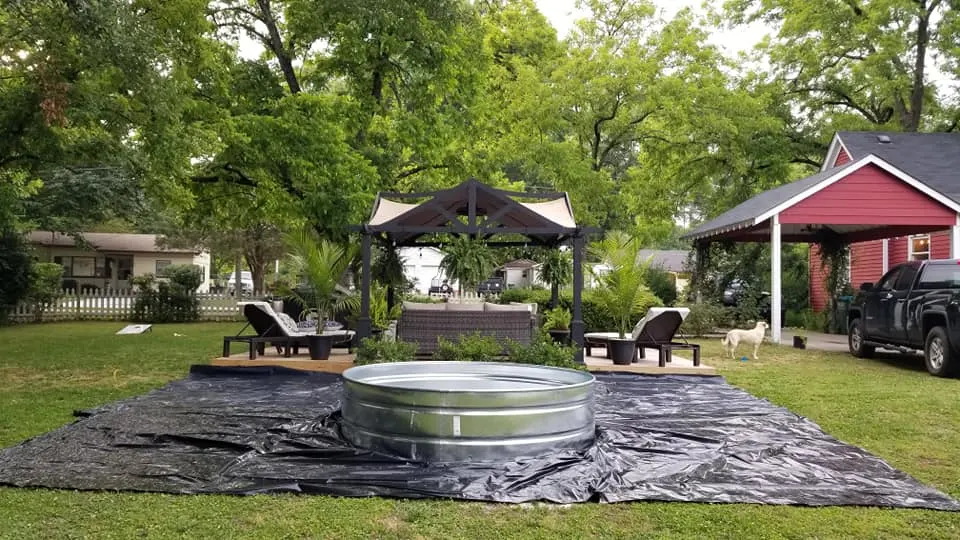
Final Thoughts
In essence, a stock tank pool cost at its most basic form can be as low as $500. Nevertheless, with upgrades and depending on how you wish to renovate your backyard, the price can go up, yet it is still an affordable alternative to a standard pool.
Are you aiming to build an affordable home? Then maybe consider this barndominium worth under 150K that may be ideal for a stock tank pool while still staying within your budget.
Noah Edis is a passionate staff writer at Barndominium Life, a leading online resource for all things barndominium. With years of experience in the writing industry, Noah has made a name for himself as a skilled storyteller and a knowledgeable authority on the topic of barndominiums.
Noah’s interest in barndominiums began when he stumbled upon the concept while researching alternative housing options. Intrigued by the rustic charm and functionality of these converted barns, he soon became obsessed with the idea of living in one himself. He spent countless hours researching the construction, design, and decorating aspects of barndominiums, and soon became an expert on the topic.
As a staff writer at Barndominium Life, Noah enjoys sharing his knowledge and passion for these unique homes with others. He has written numerous articles covering a wide range of topics, from the history of barndominiums to the best ways to decorate them. Noah’s writing is informative, engaging, and always on-trend, making him a valuable asset to the Barndominium Life team.
Noah is a graduate of the University of British Columbia, where he earned a degree in English Language and Literature. When he’s not writing about barndominiums, he can be found exploring the great outdoors, trying new restaurants, or spending time with his family and friends. Noah is dedicated to his craft and is always striving to improve his writing skills and knowledge of the barndominium lifestyle.
Connect with Noah on LinkedIn
